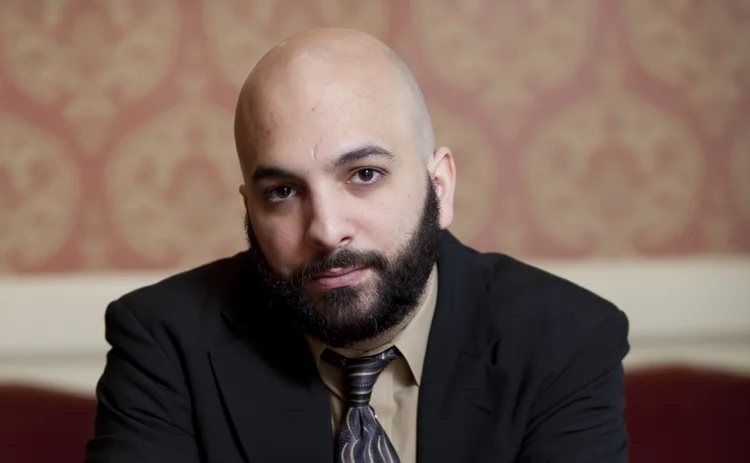Anthony Malakian: Can 10,000 Needles Rouse a Bear Economy?

Jesper Koll is a charismatic man. Tall and slender, in Japan he is noticeable. When he’s on stage, he commands a room. Koll is German and speaks his mother tongue fluently, but on this day—while giving the keynote address at this year’s Tokyo Trading Architecture Summit—he opts for Japanese, except when he answers a question from a Westerner; then he replies in perfect American English as though he was born in Muskogee, Okla.
Koll has called Japan home since 1986. He is JPMorgan’s director of Japan equity research and is widely considered an expert on the Japanese market. He is bullish on the Japanese economy—some say a bit too bullish—but when it comes to economics, there’s rarely universal agreement.
“Four years ago, I was worried Japan would go dead; it was that bad,” said Koll in Japanese, translated for the English speakers in the audience. “I was embarrassed about this country’s politics and worried about what would happen to this country. But now I’m optimistic.”
Stability
The reason for Koll’s optimism is centered on stability. In recent history, the Japanese prime minister has rarely stayed in office for longer than two years. Since 1989, seven prime ministers held the office for 365 days or fewer. Koll says this has created a state of constant worry over regime change and what new regulations will come down the pike as a result. Unpredictability is not good for finance.
In December 2012, Shinzō Abe was elected to his second term as prime minister. Starting in September 2006, his first term lasted just 365 days. With his second stab at the job, Abe implemented a fiscal plan to spur Japan’s stagnant economy. The plan is based around “three arrows,” which represent a huge fiscal stimulus, monetary easing from the Bank of Japan, and structural reforms.
Hope and stability are necessary components when IT departments are looking to get their COO and CFO to sign off new projects.
Koll did not reveal his personal opinion of Abe, but said there is much hope that the plan will help grow Japan’s economy and keep Abe in office for more than 730 days. “If you’d like to know if I like Mr. Abe or not, have a drink with me, but there is a lot of hope,” Koll said. “Maybe he’ll last three or five or six years, but for now, when it comes to financial policies, things are clear—there is a lot of predictability.”
10,000 Needles
“The three arrows have often been talked about,” Koll said. “I don’t think we should use the three arrows so often—it’s actually 10,000 needles. If it was just three arrows then in three to four years everyone would be feeling better. When it comes to the arrows, everyone talks about a big bang, but this is impossible. But step-by-step improvements—with the analogy of the needles—would be possible.”
In June, Abe will deliver an update on his growth strategy. For the time being, Koll said, there is a stable government and people’s trust in the financial sector is improving.
Good Economy = Tech Investment
In finance, everything can be tied to technology. Indeed, regulatory changes will need IT support and investment. Mergers mean the meshing of technology stacks. And a good economy is a boon for IT investment, as opposed to the financial crisis of 2008, which saw the gutting of IT departments and a freeze on spending.
Hope and stability are necessary components when IT departments are looking to get their COO and CFO to sign off new projects. And just as important as the hardware are the high-end developers and programmers that firms need to poach away from more cutting-edge technology companies.
Koll has described himself as Japan’s last optimist. When he speaks, it’s easy to believe what he says. Yet while Japan’s banks are strong, there are concerns about Japan’s declining working-age population and the possibility that Abe’s stimulus will wear off and the economy will once again stagnate.
But if Japan’s buy side is going to match those of the US and the Western Europe, now is the time for optimism—and IT investment.
Only users who have a paid subscription or are part of a corporate subscription are able to print or copy content.
To access these options, along with all other subscription benefits, please contact info@waterstechnology.com or view our subscription options here: http://subscriptions.waterstechnology.com/subscribe
You are currently unable to print this content. Please contact info@waterstechnology.com to find out more.
You are currently unable to copy this content. Please contact info@waterstechnology.com to find out more.
Copyright Infopro Digital Limited. All rights reserved.
As outlined in our terms and conditions, https://www.infopro-digital.com/terms-and-conditions/subscriptions/ (point 2.4), printing is limited to a single copy.
If you would like to purchase additional rights please email info@waterstechnology.com
Copyright Infopro Digital Limited. All rights reserved.
You may share this content using our article tools. As outlined in our terms and conditions, https://www.infopro-digital.com/terms-and-conditions/subscriptions/ (clause 2.4), an Authorised User may only make one copy of the materials for their own personal use. You must also comply with the restrictions in clause 2.5.
If you would like to purchase additional rights please email info@waterstechnology.com
More on Emerging Technologies
Bloomberg rolls out GenAI-powered Document Insights
The data giant’s newest generative AI tool allows analysts to query documents using a natural-language interface.
Tape bids, algorithmic trading, tariffs fallout and more
The Waters Cooler: Bloomberg integrates events data, SimCorp and TSImagine help out asset managers, and Big xyt makes good on its consolidated tape bid in this week’s news roundup.
DeepSeek success spurs banks to consider do-it-yourself AI
Chinese LLM resets price tag for in-house systems—and could also nudge banks towards open-source models.
Standard Chartered goes from spectator to player in digital asset game
The bank’s digital assets custody offering is underpinned by an open API and modular infrastructure, allowing it to potentially add a secondary back-end system provider.
Saugata Saha pilots S&P’s way through data interoperability, AI
Saha, who was named president of S&P Global Market Intelligence last year, details how the company is looking at enterprise data and the success of its early investments in AI.
Data partnerships, outsourced trading, developer wins, Studio Ghibli, and more
The Waters Cooler: CME and Google Cloud reach second base, Visible Alpha settles in at S&P, and another overnight trading venue is approved in this week’s news round-up.
Are we really moving on from GenAI already?
Waters Wrap: Agentic AI is becoming an increasingly hot topic, but Anthony says that shouldn’t come at the expense of generative AI.
Cloud infrastructure’s role in agentic AI
The financial services industry’s AI-driven future will require even greater reliance on cloud. A well-architected framework is key, write IBM’s Gautam Kumar and Raja Basu.








